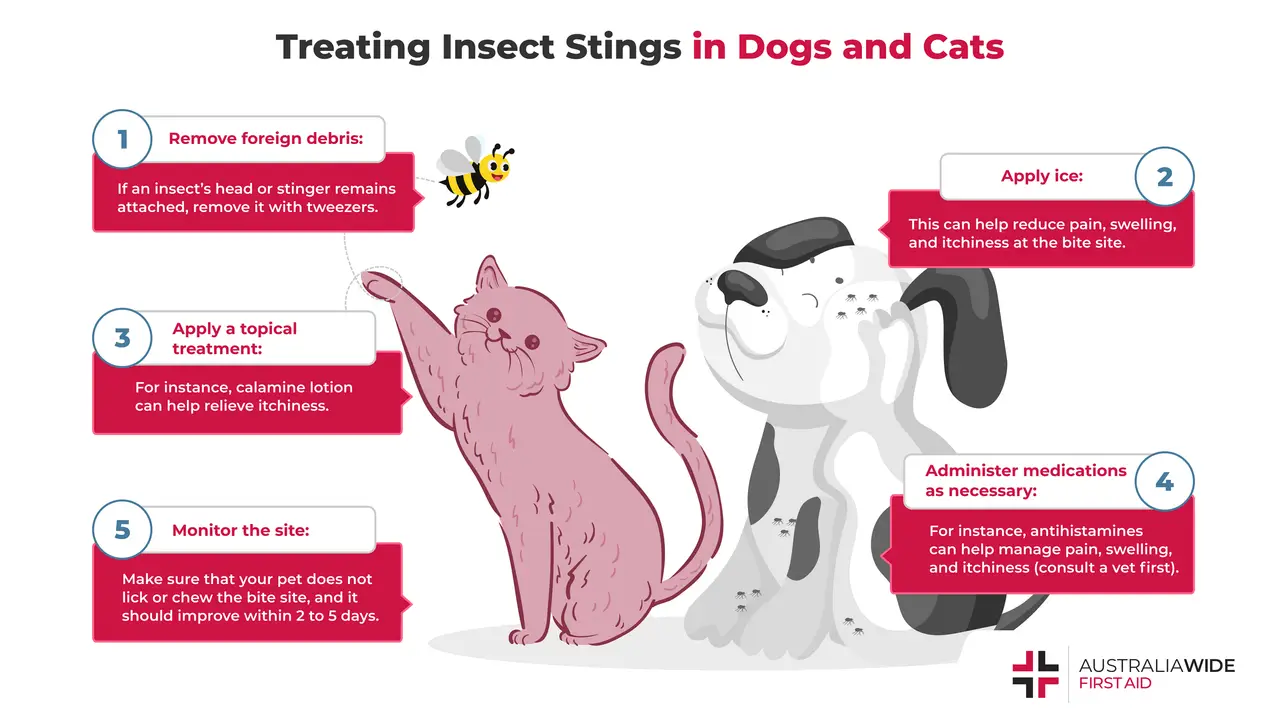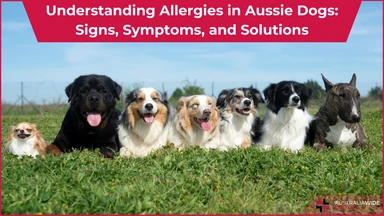First Aid for Insect Stings in Dogs and Cats


Insect bites and stings are common in dogs and cats. Fortunately, they do not often represent serious injury and can be managed at home with basic first aid. Below we will review how to identify an insect bite in your pet, first aid treatment, and when to seek professional help from a veterinarian.
Where you and your pet live and play determines the type of insects you are likely to encounter. The possibilities are as varied as the different landscapes in which we reside. The most common biting and/or stinging insects that your pet may encounter are the following:
The most common areas of injury are the nose, paws, ears, neck, belly, and groin as these are warm and inviting to insects.
Pets that have been bitten or stung will usually lick, paw, or chew at a spot on their skin. Bees, wasps, and spiders usually cause swelling and redness, and the site of injury may change colors over a few days if bruising is present. The bite or sting from smaller insects such as ants, fleas, and ticks usually causes small, red bumps in clusters.
Try to identify the type of insect that has caused the injury. This is particularly helpful information if you must seek professional assistance.
A single sting or bite will cause less of a reaction than multiple stings or bites. If your pet has been attacked by a swarm of insects, such as bees or ants, seek care from a professional. Larger doses of toxins from insects can cause allergic or hypersensitivity reactions in dogs and cats which can lead to serious complications such as anaphylaxis.
Signs of allergic reaction or poisoning include the following:
Ticks can carry harmful diseases like Lyme disease. If possible, keep and show the tick to your veterinarian so that they can identify any associated risks. It is also helpful to try to capture a spider that has bitten your dog or cat. Some spiders, such as the brown recluse or tarantula, release stronger toxins that can be harmful to your pet without professional treatment.
Insect bites and stings are a common cause of irritation in pets. The goal of first aid for insect bites and stings is to reduce irritation and increase comfort. Unless your pet is showing signs of allergic reaction or worsening symptoms then care can be managed from home. Whenever possible, capture the offending insect to properly identify it.
For more information on pet first aid, visit our resource library and check out the following articles:

April 16, 2024
Like humans, our canine friends are susceptible to allergies, which can significantly affect their quality of life. This article aims to shed light on common allergies in dogs, their signs and symptoms, treatment options, and advice on when to consult a veterinarian.

March 19, 2024
From respiratory distress to changes in droppings and abnormal behaviours, this guide outlines the key indicators of illness that require immediate attention. By understanding these warning signs, bird owners can take proactive steps to ensure their feathered companions receive timely medical treatment, ultimately promoting their health and well-being.

February 12, 2024
In the hustle and bustle of our daily lives, it's easy to overlook that our furry friends may not be leading lives as fulfilled as we'd like. Just like humans, dogs too can suffer from monotony, especially those spending large amounts of time indoors. Recognizing and addressing boredom in our canine companions is crucial for their overall well-being.